-
 Bitcoin
Bitcoin $84,293.8118
2.92% -
 Ethereum
Ethereum $1,812.6156
1.61% -
 Tether USDt
Tether USDt $0.9995
-0.01% -
 XRP
XRP $2.1300
3.96% -
 BNB
BNB $598.0731
1.81% -
 Solana
Solana $122.5476
6.46% -
 USDC
USDC $0.9999
0.00% -
 Dogecoin
Dogecoin $0.1697
6.92% -
 Cardano
Cardano $0.6614
3.58% -
 TRON
TRON $0.2399
1.67% -
 UNUS SED LEO
UNUS SED LEO $9.4721
0.87% -
 Chainlink
Chainlink $12.9918
2.93% -
 Toncoin
Toncoin $3.3918
-5.15% -
 Stellar
Stellar $0.2593
0.64% -
 Avalanche
Avalanche $18.1424
0.54% -
 Sui
Sui $2.2723
2.26% -
 Shiba Inu
Shiba Inu $0.0...01227
0.72% -
 Hedera
Hedera $0.1657
3.27% -
 Litecoin
Litecoin $84.4108
2.68% -
 Polkadot
Polkadot $4.0452
0.41% -
 MANTRA
MANTRA $6.2735
-2.26% -
 Bitcoin Cash
Bitcoin Cash $299.8507
1.71% -
 Bitget Token
Bitget Token $4.5438
1.99% -
 Dai
Dai $1.0001
0.01% -
 Ethena USDe
Ethena USDe $0.9992
-0.03% -
 Hyperliquid
Hyperliquid $11.9337
5.81% -
 Monero
Monero $215.5583
2.77% -
 Uniswap
Uniswap $5.9113
3.01% -
 Pi
Pi $0.5297
-9.83% -
 NEAR Protocol
NEAR Protocol $2.4929
1.07%
What Is the Arbitrage Pricing Theory (APT)?
The Arbitrage Pricing Theory utilizes systematic factors, such as economic growth and inflation, to estimate security returns and risk, aiding investors in portfolio optimization and risk assessment.
Oct 16, 2024 at 03:11 pm
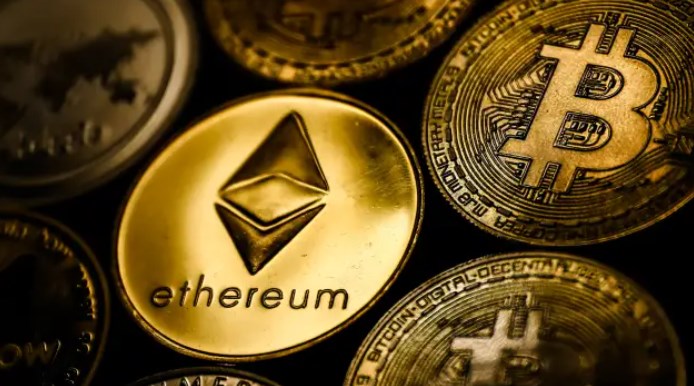
What Is the Arbitrage Pricing Theory (APT)?
1. Definition:
The Arbitrage Pricing Theory (APT) is a financial theory that attempts to explain the risk and expected return of a security based on its sensitivity to a set of common factors in the market.
2. Key Components:
- Systematic Factors: These are macro-economic factors that affect the entire market, such as economic growth, inflation, and interest rates.
- Specific Factors: These are factors that affect only a particular security or industry.
- Factor Sensitivities (Betas): These values measure how sensitive a security's return is to changes in each systematic factor.
- Expected Factor Returns: These are expectations about the future returns of each systematic factor.
3. APT Formula:
Expected Security Return = Rf + SUM(beta_i * Expected Factor Return_i)- Rf: Risk-free rate
- beta_i: Factor sensitivity of the security for factor i
- Expected Factor Return_i: Expected return for factor i
4. APT Assumptions:
- Investors can lend and borrow at the risk-free rate.
- Investors are risk-averse and make rational decisions.
- There are no transaction costs or taxes.
- Factor sensitivities are constant over time.
- Expected factor returns are unbiased estimates.
5. Applications of APT:
- Portfolio optimization: To create portfolios that are efficiently diversified across systematic risk factors.
- Risk assessment: To evaluate the risk of individual securities and portfolios.
- Security selection: To identify undervalued or overvalued securities based on their expected risk and return characteristics.
6. Limitations of APT:
- Identifying the relevant systematic factors is challenging.
- Factor sensitivities can change over time.
- Expected factor returns are difficult to forecast accurately.
- APT does not consider the effects of liquidity or behavioral biases.
Disclaimer:info@kdj.com
The information provided is not trading advice. kdj.com does not assume any responsibility for any investments made based on the information provided in this article. Cryptocurrencies are highly volatile and it is highly recommended that you invest with caution after thorough research!
If you believe that the content used on this website infringes your copyright, please contact us immediately (info@kdj.com) and we will delete it promptly.
- Justin Sun Accuses First Digital Trust of Insolvency, Triggering Severe Depeg of the FTUSD Stablecoin
- 2025-04-05 03:20:12
- The psychology of betting: how digital assets influence player behavior in 1win
- 2025-04-05 03:20:12
- Remittix Solves Real-World Problems and Provides an Actual Solution to Crypto Payments
- 2025-04-05 03:15:12
- The Crypto Market's 2025 Bull Run Is Here
- 2025-04-05 03:15:12
- If You're Hunting for the Best Meme Coin to Buy, Now's the Time to Look Beyond the Usual Suspects
- 2025-04-05 03:10:13
- PayPal Expands Crypto Services with Solana and Chainlink
- 2025-04-05 03:10:13
Related knowledge

Why is the oracle called the bridge between blockchain and the real world?
Apr 04,2025 at 04:00am
The concept of an oracle in the cryptocurrency and blockchain world is crucial for understanding how these decentralized systems interact with external data. The oracle is often referred to as the bridge between blockchain and the real world because it serves as a vital intermediary that fetches, verifies, and transmits off-chain data to the on-chain en...

What role does the Merkle tree play in the blockchain? Why can it verify data integrity?
Apr 04,2025 at 01:29pm
The Merkle tree plays a crucial role in the blockchain, primarily due to its ability to efficiently and securely verify data integrity. This article will delve into the structure of a Merkle tree, its implementation in blockchain, and how it ensures the integrity of data. Understanding the Structure of a Merkle TreeA Merkle tree, also known as a hash tr...
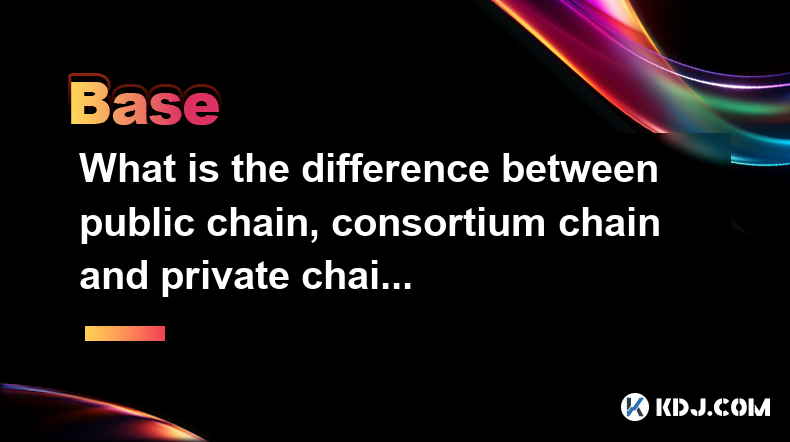
What is the difference between public chain, consortium chain and private chain? What scenarios are suitable for each?
Apr 04,2025 at 09:21pm
In the world of blockchain technology, understanding the differences between public chains, consortium chains, and private chains is crucial for selecting the right type of blockchain for specific applications. Each type of blockchain has its own unique characteristics and use cases, which we will explore in detail. Understanding Public ChainsPublic cha...
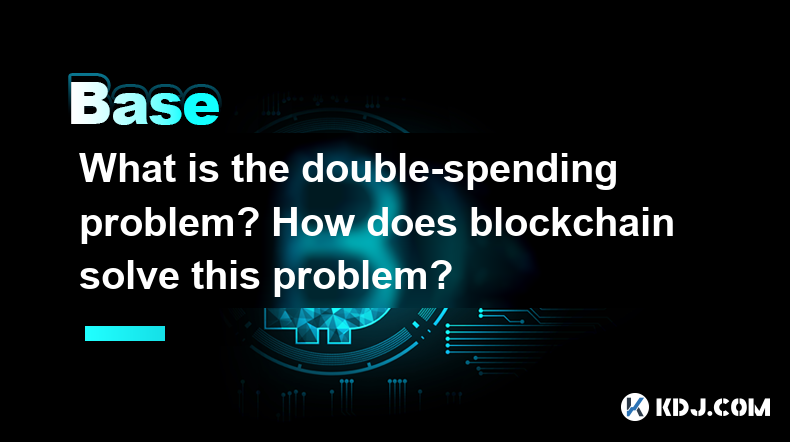
What is the double-spending problem? How does blockchain solve this problem?
Apr 04,2025 at 09:07am
The double-spending problem is a significant challenge in the realm of digital currencies. Double-spending refers to the potential for a digital currency to be spent more than once. This issue arises because digital files, unlike physical cash, can be easily duplicated. If not addressed, double-spending could undermine the integrity and trust in any dig...
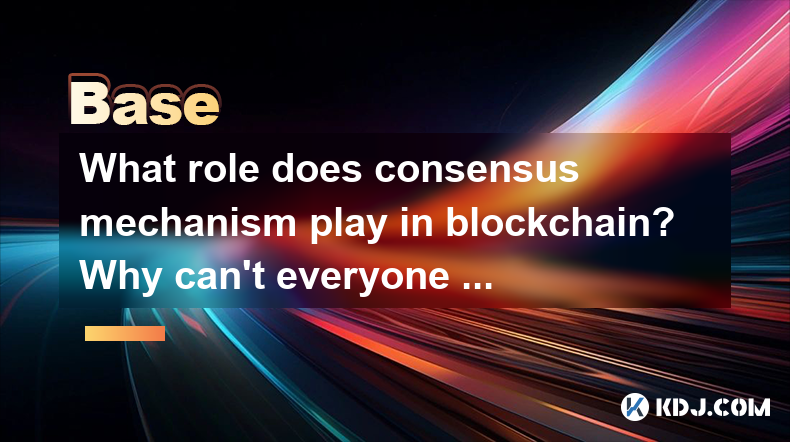
What role does consensus mechanism play in blockchain? Why can't everyone keep accounts?
Apr 05,2025 at 12:29am
The consensus mechanism is a fundamental component of blockchain technology, serving as the backbone for maintaining the integrity and security of the network. It ensures that all participants in the network agree on the state of the ledger, which is crucial for the decentralized nature of blockchain. Without a consensus mechanism, the decentralized sys...
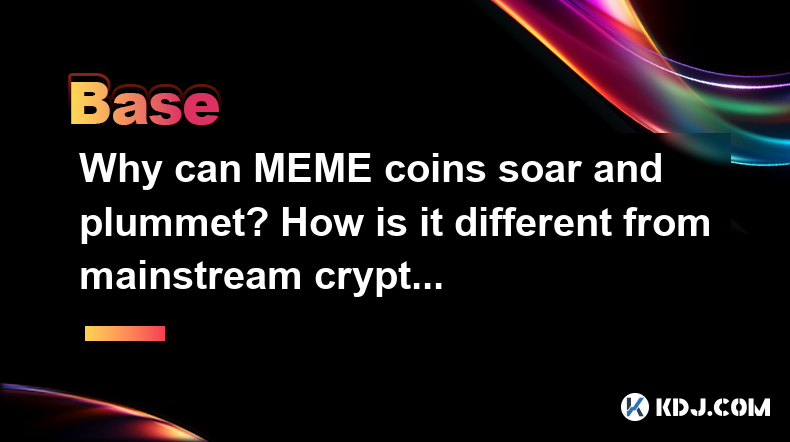
Why can MEME coins soar and plummet? How is it different from mainstream cryptocurrencies?
Apr 04,2025 at 03:07pm
The world of cryptocurrencies is vast and diverse, with a wide range of digital assets that cater to different needs and interests. Among these, MEME coins have carved out a unique niche, often experiencing dramatic price fluctuations that can both soar and plummet in a short period. This phenomenon, while intriguing, differs significantly from the beha...

Why is the oracle called the bridge between blockchain and the real world?
Apr 04,2025 at 04:00am
The concept of an oracle in the cryptocurrency and blockchain world is crucial for understanding how these decentralized systems interact with external data. The oracle is often referred to as the bridge between blockchain and the real world because it serves as a vital intermediary that fetches, verifies, and transmits off-chain data to the on-chain en...

What role does the Merkle tree play in the blockchain? Why can it verify data integrity?
Apr 04,2025 at 01:29pm
The Merkle tree plays a crucial role in the blockchain, primarily due to its ability to efficiently and securely verify data integrity. This article will delve into the structure of a Merkle tree, its implementation in blockchain, and how it ensures the integrity of data. Understanding the Structure of a Merkle TreeA Merkle tree, also known as a hash tr...

What is the difference between public chain, consortium chain and private chain? What scenarios are suitable for each?
Apr 04,2025 at 09:21pm
In the world of blockchain technology, understanding the differences between public chains, consortium chains, and private chains is crucial for selecting the right type of blockchain for specific applications. Each type of blockchain has its own unique characteristics and use cases, which we will explore in detail. Understanding Public ChainsPublic cha...

What is the double-spending problem? How does blockchain solve this problem?
Apr 04,2025 at 09:07am
The double-spending problem is a significant challenge in the realm of digital currencies. Double-spending refers to the potential for a digital currency to be spent more than once. This issue arises because digital files, unlike physical cash, can be easily duplicated. If not addressed, double-spending could undermine the integrity and trust in any dig...

What role does consensus mechanism play in blockchain? Why can't everyone keep accounts?
Apr 05,2025 at 12:29am
The consensus mechanism is a fundamental component of blockchain technology, serving as the backbone for maintaining the integrity and security of the network. It ensures that all participants in the network agree on the state of the ledger, which is crucial for the decentralized nature of blockchain. Without a consensus mechanism, the decentralized sys...

Why can MEME coins soar and plummet? How is it different from mainstream cryptocurrencies?
Apr 04,2025 at 03:07pm
The world of cryptocurrencies is vast and diverse, with a wide range of digital assets that cater to different needs and interests. Among these, MEME coins have carved out a unique niche, often experiencing dramatic price fluctuations that can both soar and plummet in a short period. This phenomenon, while intriguing, differs significantly from the beha...
See all articles





















































































